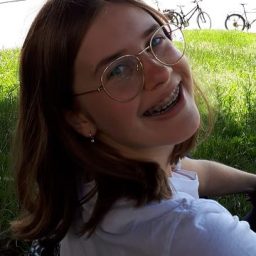by Luna
It has only been a week since we stopped in Grenada but we were all excited to have a look at the more than 360 completely wild islands and to get a first impression of indigenous tribes. Some islands are empty but most of them are inhabited by one family. We got closer and closer to the islands and the black shadow turned more into a breathtaking picture of green islands with white sand beaches, palm trees and wooden huts. From our anchorage we were able to see a lot of different islands, some more wild and full of plants, others completely sandy and white. As we are always hungry, some students had the opportunity to make the first step onto the San Blas Islands only to buy coconuts. Before we were all able to explore the unknown culture, we watched a movie to get a feeling of what is waiting for us.
The Kunas live on the San Blas island and in their own territory in Panama mainland. This area is autonomous, therefore they rule it themselves. On top of that they are the only Panamanian tribe which is represented in the parliament. They founded an organization which helps indigenous tribes in Latin America to have more rights and to defend illegal rainforest destroying. Two years ago, for example, they accused the international sports concern NIKE that they had stolen their design for their shoes. These traditional designs and clothes are another interesting part of their culture: They have originally handmade blouses for women which are embroidered with complicated patterns and symbols. Nowadays you can find it on different objects, for example pillows. Many KUSis bought them as you can’t find them anywhere else. Therefore, we even had a small market on board where some Kuna women sold their artisanal and selfmade Molas.
The next day we went on the so called “swept island”. Only a few people live on the island in their handmade wooden huts. They look as if the wind and the rain can simply drop through but for the Kunas it is normal to get along with that. The people themselves were very welcoming and gave us an answer on every question. In the huts or next to them we could see colorful hammocks. On the day before we learned that if a Kuna man marries a Kuna woman, he just need to hang his hammock into the new house and the marriage is official. This example shows how simple they take life although it isn’t so easy for them. Many things which we would consider as necessary are not easy to get for them.
One example is drinking water, they usually have to buy it and carry it on their small one tree boats to their island. Another big problem is the amount of rubbish on the islands. We did a one-hour beach cleaning activity on one island and although we collected 20 big bags of waste all together, we could still see plastic wherever we looked. It is sad how much of the rubbish comes from tourists but on the other side, the Kunas don’t know what to do with all their plastic either. They mostly burn it but the rest they deposit between the palm trees and their houses. By now it should be obvious that the Kuna tribe and their culture is very special and should be kept for much longer. I really enjoyed our stay there and I hope that I can visit this beautiful place again before the climate change will make the island disappear. The sea level is rising every day and in only a few years the flat land parts will be under water.
At last a happy birthday wish from Katharina to her amazing sister Amelie: I love you from all my heart and wish you a great day from far away. Celebrate it with the people you love and hopefully we will soon celebrate one of our birthdays together. You are the best older sister I could ever imagine and I am so proud of you.

